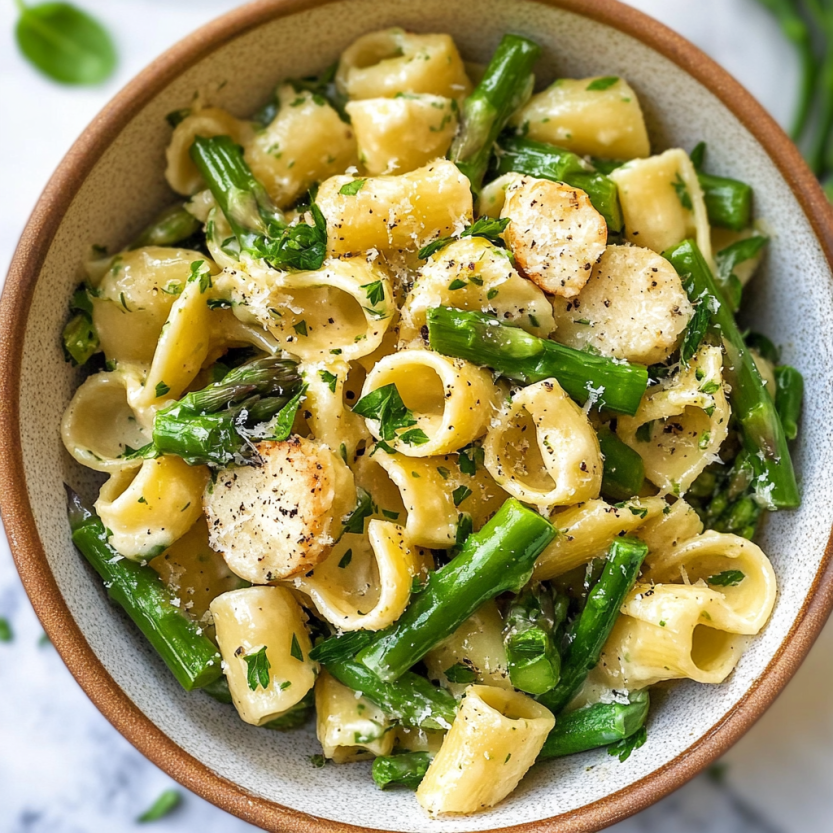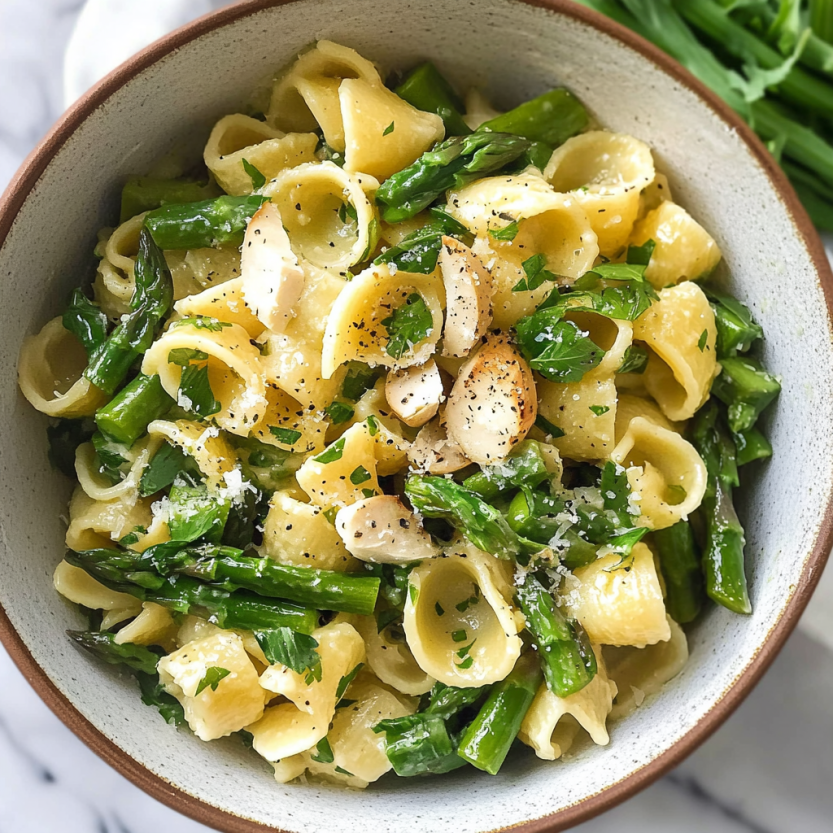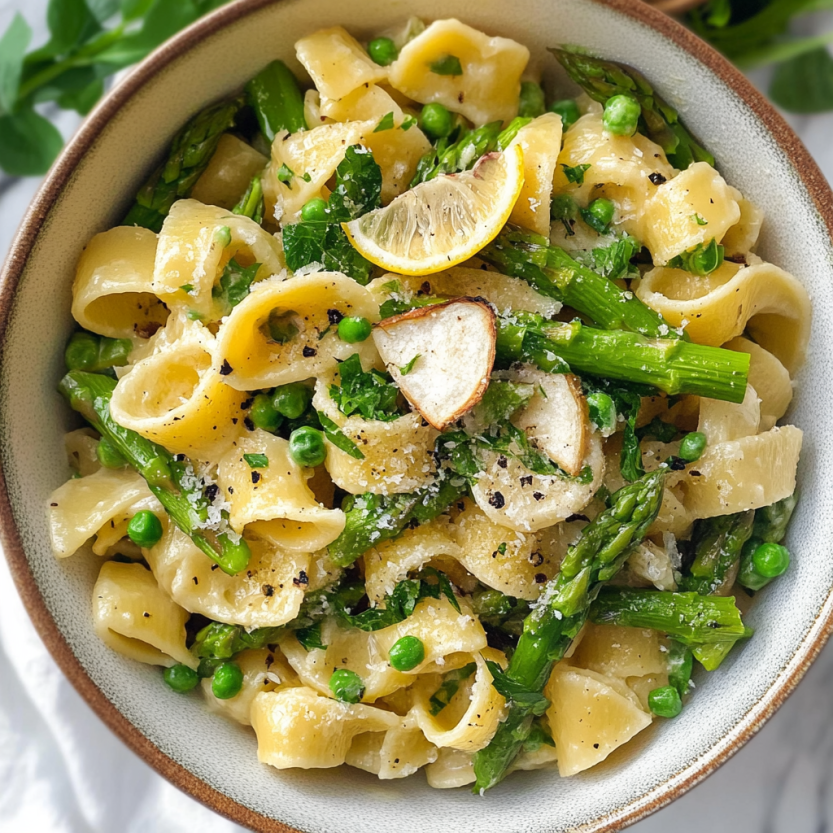 Save
Save
This pea and asparagus pasta is my go to when I need something fast yet a bit special for spring. The fresh flavors of lemon and greens come together in a snap. It is a dish that looks and tastes restaurant worthy but takes just around fifteen minutes from start to finish.
I made this one evening with leftover asparagus and peas and my family raved about it. Even picky eaters finished every bite and now it is in our regular dinner rotation.
Ingredients
- Asparagus: about half a pound snapped to remove the woody ends fresh and crisp stalks are best look for bright green color with tightly closed tips
- Fresh or frozen peas: these add sweetness and color choose peas that are plump and vivid green
- Extra virgin olive oil: for drizzling and sautéing adds richness use a good quality for best flavor
- Garlic cloves: minced gives a gentle kick of flavor look for firm bulbs with tight skins
- Salt and pepper to taste: brings all the flavors together opt for sea salt and freshly cracked pepper if possible
- Parmesan cheese: gives that classic savory finish pick a wedge and grate just before serving for maximum freshness
- Unwaxed lemon: both the zest and juice adds zing choose one that feels heavy and thin skinned for juiciness
- Fresh parsley leaves: optional for brightness select flat leaf for most flavor
- Pasta: orecchiette penne or fusilli are great picks buy a pasta with a bit of texture to help the sauce cling
Step-by-Step Instructions
- Cook the Pasta:
- Bring a large pot of salted water to a rolling boil and cook your pasta according to package directions until al dente. Stir the pasta now and then so it does not stick together and taste a piece toward the end to check the texture.
- Prep the Asparagus and Peas:
- Wash the asparagus thoroughly and slice into pieces no longer than one inch. If the stalks are very thick slice them lengthwise first. Keep the pieces even so they cook at the same rate.
- Blanch the Vegetables:
- In a wide pan add the chopped asparagus and peas then pour in about half an inch of your pasta cooking water. Cover with a lid and bring to a boil over medium high. Let the veggies cook about three minutes just until bright green but still with a bite.
- Sauté with Garlic and Olive Oil:
- After draining off any remaining water return the vegetables to the hot pan. Add olive oil minced garlic and a pinch each of salt and pepper. Sauté about two minutes so they keep color but lose that raw edge. Taste and adjust seasoning.
- Combine and Finish:
- Reserve half a cup of the pasta water before draining the pasta. Add the pasta right into the pan with the vegetables. Toss in grated parmesan zest and juice from half a lemon and a bit of parsley if using. Stir well adding a splash of pasta water at a time. You want everything sleek and a little glossy but not soupy.
- Serve:
- Spoon into bowls and top with extra parmesan and a little more olive oil if you like. Serve immediately while still hot and enjoy the pop of flavors.
 Save
Save
One thing I absolutely love in this dish is how the lemon zest wakes up all the flavors. I remember one spring evening when my daughter added a little extra cheese at the table and declared it her favorite dinner ever. We talked and laughed long after our bowls were empty.
Storage Tips
Leftovers keep well in the fridge for up to two days in a covered container. When reheating add a splash of hot water or olive oil to loosen the pasta so it stays silky not sticky. I do not recommend freezing since the veggies can get mushy and lose their color.
Ingredient Substitutions
You can swap out asparagus for broccolini or green beans if needed. Frozen peas work just as well as fresh so grab whatever you have on hand. If you want a dairy free version try nutritional yeast instead of parmesan for a similar savory kick. And any short pasta shape will do just fine.
Serving Suggestions
Pair this pasta with a crisp white wine or sparkling water with lemon. A simple arugula salad on the side rounds things out. It is a lovely main course on its own or a lighter partner for grilled chicken or fish.
 Save
Save
Cultural Context
This kind of pasta celebrates Italian primavera which means spring. Italians welcome season changes with produce driven meals and using fresh asparagus and peas is a classic way to usher in warmer weather. Lemon and parsley lift the flavors while parmesan ties it to tradition.
Recipe Questions
- → Can I use frozen peas?
Yes, both fresh and thawed frozen peas work well. Thaw frozen peas first for even cooking and best texture.
- → What types of pasta suit this dish?
Short shapes such as orecchiette, penne, or fusilli are ideal for catching the peas and asparagus pieces.
- → Can I make this dish vegan?
Substitute parmesan with nutritional yeast or a plant-based hard cheese for a vegan-friendly version.
- → Is fresh lemon necessary?
Fresh lemon zest and juice lend brightness, but if unavailable, a splash of white wine vinegar can add tang.
- → What’s the best way to keep asparagus tender?
Quick cooking in pasta water followed by a brief sauté keeps asparagus crisp-tender and bright green.
- → Can I prepare this dish in advance?
It’s best enjoyed fresh, but you can prep ingredients ahead and assemble everything just before serving.